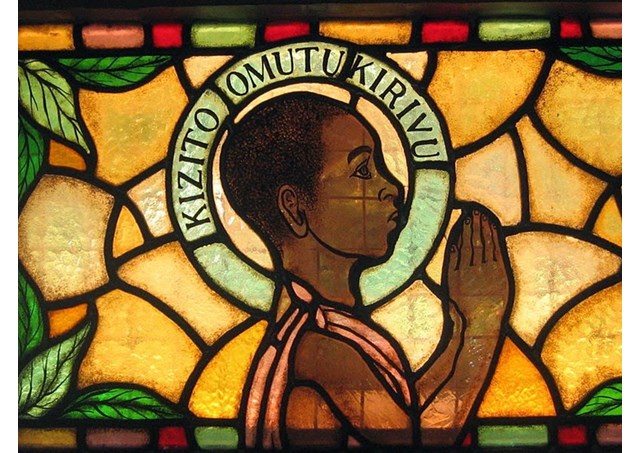
Remembering the Ugandan martyrs

(Vatican Radio) On Saturday, Pope Francis celebrates Mass at the shrine of Ugandan martyrs, located at Namugongo to the east of the capital Kampala. The site houses a shrine to both Anglican and Catholic martyrs who were killed for refusing to renounce their faith in the 19th century.
Bramble Badenach-Nicolson tells us more:
Listen:
The shrines commemorate the deaths of the martyrs, a group of 23 Anglican and 22 Catholic converts from traditional African religions to Christianity in what was formerly the kingdom of Buganda, now part of Uganda. The Pope's visit will mark the 50th anniversary of the canonisation by Pope Paul VI of the country's 22 Catholic martyrs.
They were executed between November 1885 and January 1887 on orders of the King of Buganda after having refused to renounce their Christian faith.
Whilst their martyrdom is regarded as an important part of the history of the Church for the past century and a half, the large Basilica at Namugongo was only built in 1968, following their canonisation.
The Holy Father’s visit to the shrines will be a poignant step in ecumenical dialogue, stressing the fact that when Christians are persecuted and killed there is no distinction between different denominations and their blood is shed together. Pope Francis will unveil a commemorative plaque near the recently renovated chapel where the martyrs' relics are kept.
In visiting the Anglican shrine, the Pope will demonstrate his closeness with the worldwide Anglican communion and will encourage ecumenical dialogue in Kenya.
The Ugandan martyrs were beatified by Pope Benedict XV in 1920 and canonised by Pope Paul VI in St Peter’s Basilica on October 18th 1964. Among the journalists covering that historic event was our colleague Jill Bevilacqua who was writing for Britain’s Catholic newspaper ‘The Universe’ before coming to work here at Vatican Radio. She shares with us her memories of that momentous event, half a century ago…..
"Eight o’clock on a sunny October morning. St Peter’s square full of movement. The bishops hurrying up the steps looked quite plain and everyday in contrast with the scores of colourful African pilgrims moving towards the Bernini colonnades.
All the women wore long, narrow skirts with frilly peplums. Their heads were swathed in turbans of varying colours, each wound in a different style. The most popular colours were green, yellow and pink. High-heeled winkle-picker shoes were the order of the day. One tall Ugandan was having considerable trouble with her stiletto heels which kept getting caught in the “sampietrini” as the Roman cobblestones are called. Every few minutes the rushing crowd would come to an abrupt halt as she got stuck again. And then, amid general amusement, on we went, through the Arch of Bells and into the Basilica.
For the canonization of the twenty-two Ugandan martyrs the best seats had been given to the Africans, who were the guests of honour. High above the Press pen a long line of teenage girls hung over their balcony, whispering excitedly. Suddenly there was a clatter on the marble as one elegant miss dropped her green necklace and the beads went scattering over the floor. Hands stretched out pleadingly and the stern-looking papal gendarme had to shed his dignity for a moment and scramble on the ground to retrieve the beads.
During the ceremony the girls were silent and attentive. Though the actual canonization took place at the top of the Basilica, when Mass began at the High Altar we had a good view. The brilliantly coloured banner representing the Martyrs was carried by for all to see and there was great excitement when three or four officials appeared bearing white Offertory doves in cages.
In the midst of the singing we suddenly heard the tom-toms. Quietly at first, then more insistent, followed by the rich voices of fifty African choristers. Ugandan music: Africans, Americans, Europeans – everyone was smiling with pleasure.
Even the solemn dignitaries, used to years of Papal ceremonial, were shaken out of their composure by the joyful stirring sound. And when the Pope said, “the people of Africa, Christ’s new people…” the resounding applause that followed shook the massive chandeliers. St Peter’s had never seen anything like it. For it was Africa’s day and the whole world was delighted about it."
| All the contents on this site are copyrighted ©. |


